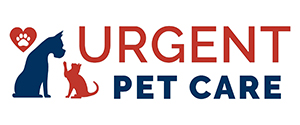- Do you subscribe to Dharma Dog Training’s Newsletter? You should.
- A Unique Campaign from The Humane Society of the United States
- Rabid bats in Omaha- Stay safe, prepared with these tips
- Springtime Activities in Omaha
- Mill Dog Monthly from Bailing Out Benji
- World Spay Day, Legislative Alert in Nebraska
- Attend the Nebraska Rescue Council’s monthly meeting this Saturday
- Five Hard-to-Ignore Reasons to Adopt!
- Paws in Pink to Benefit Breast Cancer Foundation
- VCA, Inc. Acquires MidWest Vet Specialists from Kansas State University
Cancer In Dogs: Why They Have A Higher Risk Than Other Animals

Cancer is an old disease studied for generations, resulting in considerable progress in understanding its spread and development. Although most of this study focuses on cancers in humans, much of this acquired knowledge is also useful for veterinarians in understanding cancers in animals.
Being both mammals, humans and dogs share similar molecular systems. Some cancers in animals are very similar to those in people, like breast cancer. Unfortunately, there’s much less research being done on malignancies in animals.
Pet owners are greatly concerned about the health and well-being of their four-legged companions. The seemingly increasing rate of cancer in dogs has led to further studies on its causes and understanding why dogs have a higher risk than other animals.
Causes of Cancer In Dogs
Numerous medical studies in both humans and animals have shown that cancer can be triggered by various factors, including genetics, age, environment, and nutrition.
As with humans, cancer develops through a complex process that gradually proceeds through the interaction of multiple factors.
Genetics
Statistics show that certain breeds are more susceptible to cancer than others, suggesting that genetic characteristics contribute to the higher rates of cancers in animals.
Although more research is needed to better understand the specific genetic factors involved in the development of cancer, the increased risk may be caused by a combination of genes or by a single gene.
Age
Numerous veterinarians and pet owners have observed the frequency of developing cancers on older pets. Although, animal research is yet to determine the link between advancing age and cancer development.
One of the reasons age may contribute to the development of cancer in pets is that advanced age results in a weaker immune system. This may result in the body’s inability to prevent mutated cells from being malignant.
Another contributing factor is that the longer the pet lives, the longer they are exposed to potential environmental carcinogens. Thus, though indirectly, there are various reasons observed in the correlation between old age and cancer development.
Environment
Studies in human cancers show that risk factors present in the environment or lifestyle are likely to pose a major role in the occurrence of cancer.
Because pets are subject to the same environment as their owners, studies suggest that these factors may also contribute to the development of cancers in pets.
Carcinogens
There are known carcinogens that may contribute to cancer development in pets. This includes UV radiation, second-hand smoke, herbicides, insecticides, pesticides, air pollution, smog, and other common substances like nickel, vinyl chloride, asbestos, uranium, benzidine, benzene, radon, and cadmium have been identified as carcinogens or contributing factors in cancer occurrence.
Just as humans react differently to carcinogens, pets may also have a higher or lower sensitivity to these risk factors.
Viruses
Some cancers in pets are known to be caused by viruses. One example is oral papillomas, a type of benign cancer that develops in the dogs’ mouths, especially in younger dogs.
Some cancers in pets are sexually transmitted. The canine transmissible venereal tumor or genital cancer of dogs is transmitted during sexual intercourse. Cancerous cells are transmitted during contact between a healthy animal and an infected animal.
Traumatic Injuries
Although short-lived physical injuries cannot cause cancer, veterinarians and researchers conclude that the areas of serious traumatic injuries have an increased risk of developing cancer.
The location of implants such as pins or metal plates or bone fractures, especially if the fracture is recurring, have been discovered to have a higher risk of developing sarcomas or malignant tumors.
This information led to the speculation that chronic inflammation may contribute to cancer development.
Other Known Causes
Veterinary researchers have identified the specific causes of some cancers in pets. According to research, almost all domestic animals develop squamous cell carcinoma, a type of cancer that develops in superficial skin cells.
Researchers have learned that prolonged exposure to ultraviolet light in sunlight is a huge risk factor. Additionally, it’s been discovered that white dogs, white cats, and horses with white facial markings have a higher risk of developing cancer.
Dog Breeds With A Higher Risk Of Cancer
- Bernese Mountain Dog. High probability of developing different types of cancer, including malignant histiocytosis and mast cell tumors.
- Golden Retriever. Highly likely to develop hemangiosarcoma or cancer of the blood vessels. This is an aggressive type of cancer commonly seen in this breed, as is lymphoma.
- Scottish Terriers. High risk of developing bladder cancer if often exposed to pesticides and herbicides. This is believed to be a combination of genetic and environmental factors.
- Rottweiler. Higher than average risk of developing lymphoma, mast cell tumors, soft tissue sarcomas, bone cancer, bladder cancer, and cancer of the blood vessels.
- German Shepherd. Very high rates of developing cancer of the blood vessels.
- Boxer. Often diagnosed with mast cell tumors commonly found on the skin.
- Poodle. Standard poodles have an increased risk of cancer found on the dog’s toes. Strangely, this very aggressive form of this cancer is often diagnosed in dark color poodles but rarely in light-colored ones.
Ruth Riley teaches linguistics to college students and also conducts studies about CBD. She loves the sciences – Diagnostic imaging in particular, making her a contributor for W-Radiology.com.
Latest News
-
3 Tips for Pet Owners on Training Rescue Dogs
Owning a rescue dog can take some work compared to...
- Posted 2 weeks ago
- 0
-
Choosing the Right Pet for Your Lifestyle
Are you thinking about getting a pet but unsure what...
- Posted 4 weeks ago
- 0
-
How to Make Your Rescue Pet as Comfortable as Possible
Did you bring home a new pet from a shelter...
- Posted 2 months ago
- 0
-
How Having A Pet Can Change Your Life
Having a pet can open your heart in ways that...
- Posted 7 months ago
- 0
-
How To Improve The Life Of Your Senior Pet
Do you have an elderly fur baby and want to...
- Posted 7 months ago
- 0
-
Springtime Activities To Enjoy With Your Furry Friends
Are you preparing for warmer weather and want some ideas...
- Posted 8 months ago
- 0
-
Pros And Cons Of Microchipping Your Pets
Have you considered whether your pets should be microchipped and...
- Posted 9 months ago
- 0


















You must be logged in to post a comment Login